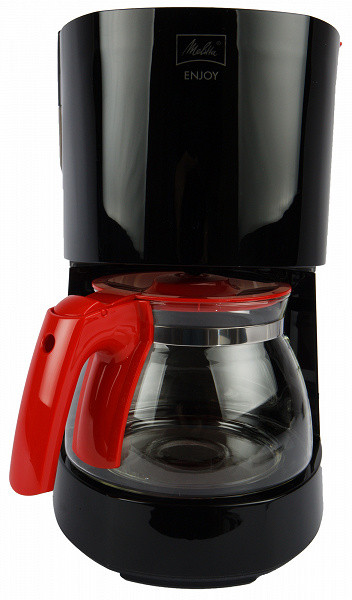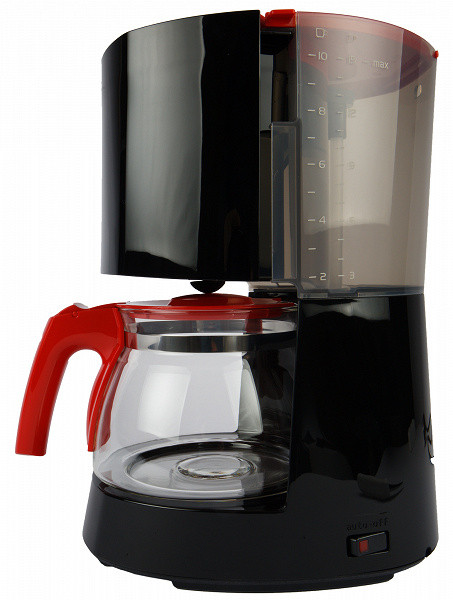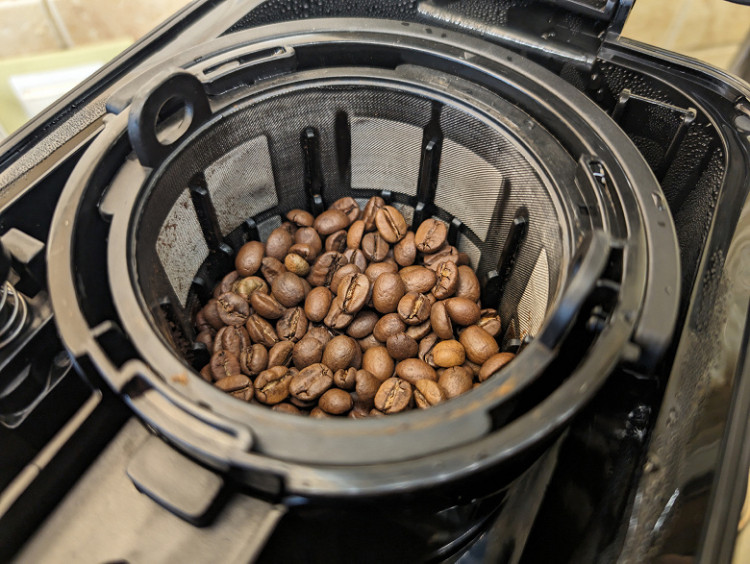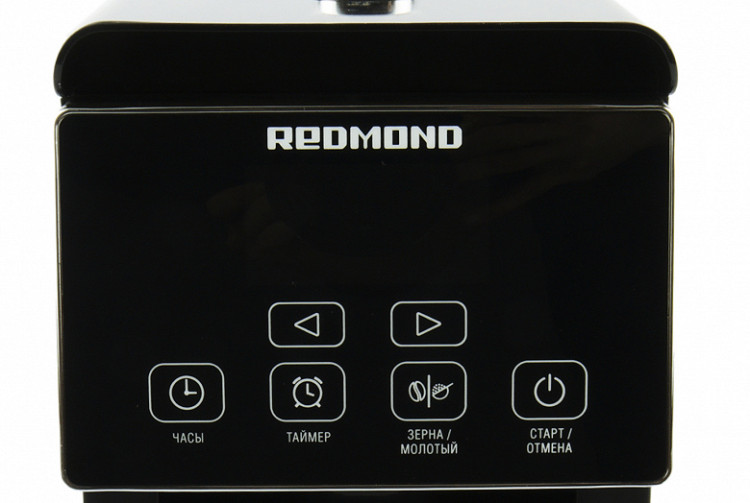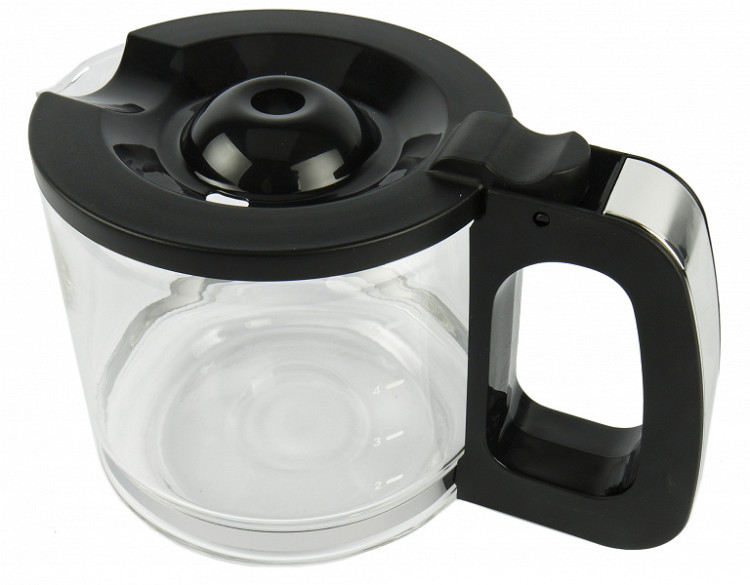A drip coffee maker is a popular but controversial coffee making device. It has many opponents, but also many loyal fans. Our extensive guide to choosing a drip coffee maker, written in 2019, remains relevant and will be useful for those who want to understand in detail the structure of these devices and the standards for making filter coffee. Especially considering that this is the type of coffee that experienced baristas have begun to recommend, claiming that making a good espresso at home is difficult and time-consuming for a non-professional, and the best drink can be obtained using a drip coffee maker. However, it is worth noting that this is not true for all models.
Redmond CM700: ideal parameters of the drink and one drawback
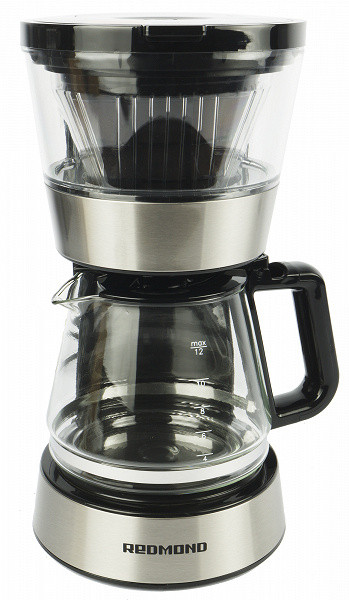
The model immediately attracted attention with its appearance, and we felt that it would be pleasant to work with, and the coffee would be, if not excellent, then good. The water tank holds 1.2 liters, and for making coffee you can use either the nylon filter included in the kit or purchased paper ones.
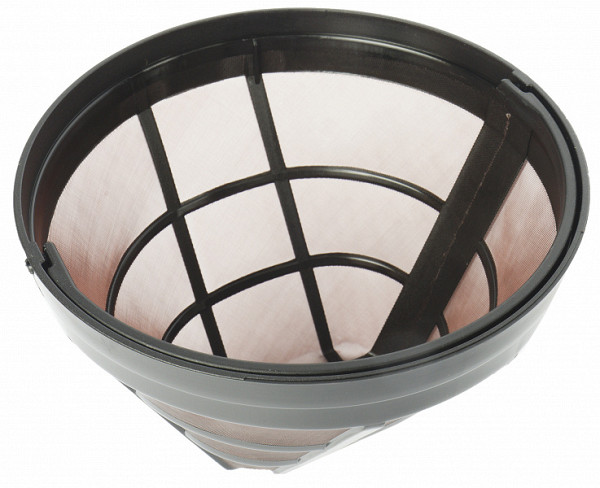
The anti-drip system stops the coffee supply if the jug is not installed — this is a classic solution. All parts that come into contact with coffee are removable and can be washed under running water. The jug holds from 4 to 10 cups of 100 ml.
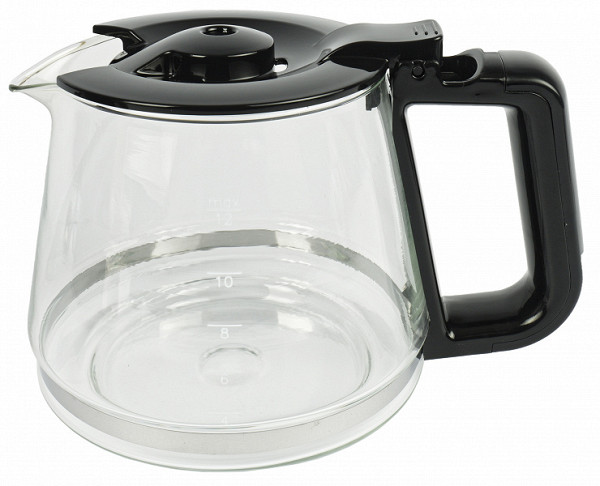
The coffee maker has simple controls: just one button to turn it on. After brewing, it switches to the heating mode, which does not turn off automatically, which is worth keeping in mind for forgetful users. The instructions do not specify this point.
The process of making coffee and the quality of the drink did not cause any problems. The lid of the brewing chamber closes tightly, retaining heat, and the water is evenly supplied to the jug. However, it is worth noting that the neck of the reservoir is narrow, so you need to pour water carefully.
The temperature of the water supplied to the brewing chamber reached 91 °C, which is close to the recommended 92-96 °C. Despite minor heat loss due to the slightly open lid, the result can be considered excellent. According to the standard, in the heating mode, drip coffee should maintain a temperature of at least 80 °C and no higher than 85 °C; we measured 82 °C, which is an excellent indicator for a budget device. By the way, drip coffee makers usually heat up the finished drink in the jug, but in our case, after half an hour of automatic heating, the temperature remained at 81 °C. The brewing time slightly exceeded the recommended 8 minutes by only 20 seconds, which did not affect the taste, and perhaps even made it richer. Using coarser ground coffee can increase the pouring speed and add sourness to the taste.
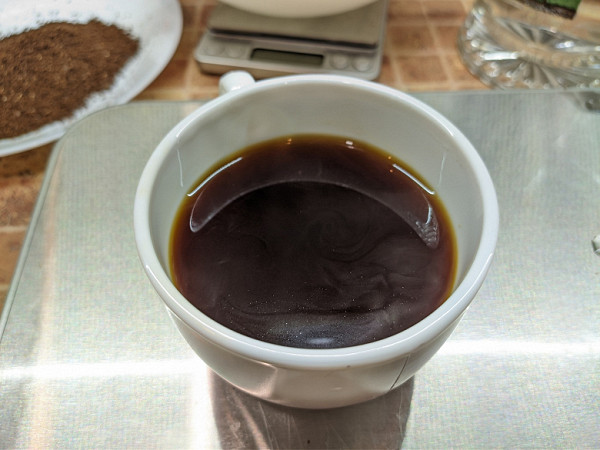
Melitta Enjoy 1017-09: adjustable strength and delicious coffee

The model of the famous German brand specializing in coffee equipment promises high quality. The glass jug holds 1250 ml, and the coffee maker is equipped with an anti-drip system, auto-heating and auto-off. The kit includes five paper filters. The body is made of high-quality plastic. One of the features is the AromaSelector strength regulator, which allows you to adjust the strength of the coffee to the user's preference.
Interestingly, the strength regulator turned out to be a convenient, but uneconomical solution. The manufacturer was a bit cunning: it cannot be used to make coffee “stronger”, only weaker. Depending on the position of the regulator, water is supplied either in the center or along the edges of the “watering can”, which reduces the brewing time and, accordingly, makes the coffee weaker. However, weaker coffee can be obtained more easily, simply by using less coffee powder.

This model does not have a reusable plastic filter, so you will need to stock up on paper ones. The brewing unit is removable and can be easily washed under water, which greatly simplifies the maintenance of the coffee maker.
The standard anti-drip system blocks the coffee supply if the jug is not installed. The jug is made of glass and plastic. The device is controlled by one button, and after brewing coffee, it heats the drink for forty minutes, after which it turns off. According to our measurements, it takes a little more than eight minutes to brew a standard portion of coffee, and the water temperature in the brewing unit during testing reached 90 ° C, which is an excellent result.

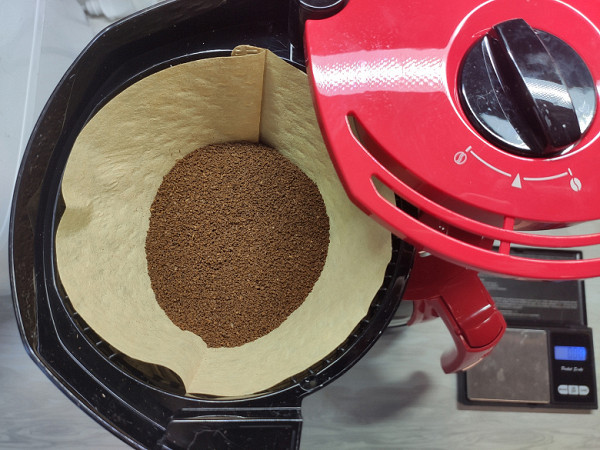
When preparing a full volume of coffee, the jug was filled in 8 minutes 10 seconds, and a liter — in exactly 6 minutes. The taste of the drink was rich and balanced, without the characteristic sourness that occurs when the water temperature is insufficient. According to our estimates, the coffee turned out to be very good compared to the results of semi-professional devices and excellent in the category of budget models. It is important to note that all the ground coffee in the filter was brewed completely, without loss over the edges.
De’Longhi Clessidra ICM17210: Great Style, Delicious Coffee
The coffee maker is aimed at the status of a “professional” device, and the first thing that catches the eye is its stylish hourglass-shaped design and high quality workmanship. The manufacturer claims that this model is approved by the European Coffee Brewing Centre.
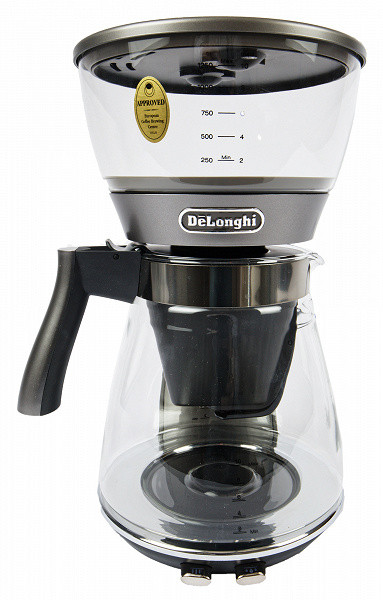
The glass water tank holds 250 to 1250 ml, which is equivalent to 2 to 10 cups. The brewing unit with filter and coffee is placed directly into the jug. There is no reusable filter, you must use 1×4 paper filters. The anti-drip system turns off the water supply if the jug is not installed or installed incorrectly.
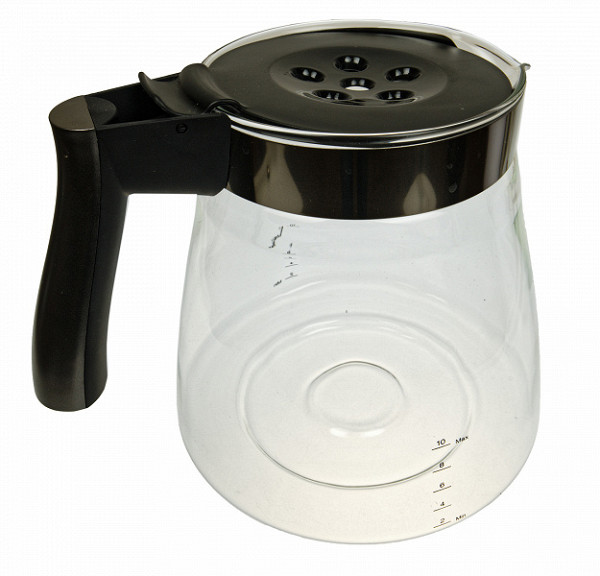
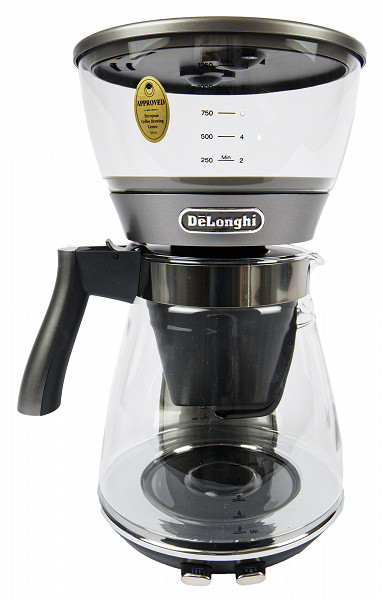
The coffee maker offers two operating modes for fast and slow pouring, each of which is activated by a separate backlit button. The device signals that the drink is ready with a beep.
Unlike budget models, this coffee maker first heats up the entire volume of water and then pours it through a filter with coffee. The pouring time is regulated by a built-in valve, which improves the quality of the drink, although it increases the brewing time. The device also controls the temperature of the water and heats it up if it has cooled down. After brewing, the coffee maker switches to the heating mode, which lasts forty minutes, but it can be turned off.
A special feature is the funnel, installed directly in the jug. Before pouring the drink, you need to remove the holder with the used filter and place it on a special stand. This prevents the accumulation of used coffee, but can cause inconvenience.
The coffee maker is equipped with a descaling mode, which is activated by pressing two buttons at the same time. Users note that descaling should be done after 25 brewing cycles, and this parameter cannot be changed, even when using soft water.
According to our measurements, brewing begins at a water temperature of 97 °C. After brewing coffee in a jug, the temperature was 80 °C, and in the heating mode it dropped to 76 °C — these are acceptable indicators. The brewing time for a full volume in fast mode was 5-5.5 minutes, while it took 4 minutes and 28 seconds to heat the water, which is in line with the recommendations of the Specialty Coffee Association of America (SCAA). In slow mode, the total brewing time was 11 minutes and 48 seconds, of which 7 minutes were spent on brewing, which gave a richer and stronger drink.

We also made a small 500ml serving of coffee. It took 2 minutes and 10 seconds to heat up the water and 2 minutes and 15 seconds to pour in the first mode and 3 minutes and 55 seconds in the second. The flavour of the drink was less intense compared to making a full jug, although it was still quite decent. It seems that this coffee maker is best suited for full-size brews, which is in line with its status as a professional device, more often used in small offices, anti-cafes, coworking spaces and hostels. It is also great for a large family.
Redmond CM703: built-in coffee grinder and super compactness
Redmond CM703 can use both ground and whole bean coffee. The beans are placed directly into the brewing chamber, where they are ground by a built-in rotary coffee grinder. To do this, select the «Bean» mode, in which grinding occurs first, and then hot water is poured in. The user can select coarse, medium or fine grinding, and the device will automatically adjust the rotor operating time. However, the number of beans in the bowl is not taken into account, which also affects the grinding result. The user must monitor the optimal ratio of beans, water and grinding degree, since the coffee maker always uses the entire volume of liquid from the reservoir (800 ml) and does not allow you to adjust the amount of water.
The coffee maker is equipped with touch control. First, you need to set the clock, as the device has a timer that allows you to set the start time of brewing. A self-cleaning function is also provided. Heating works for one hour, and it can be extended. In addition, to quickly heat up a cooled drink, just press the «Power» button.
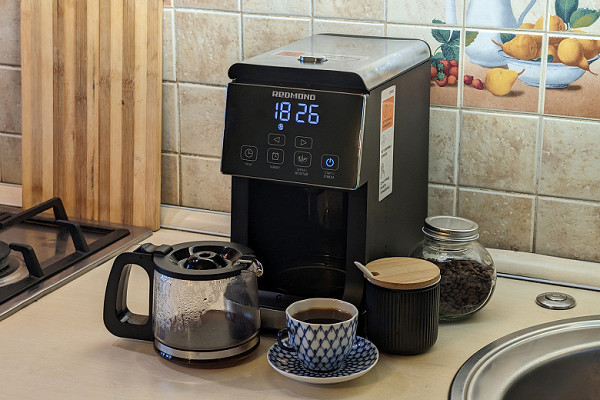

Maintenance of the coffee maker is not limited to periodic self-cleaning with a special agent. After each brewing, it is necessary to remove the brewing unit, rinse it under running water and dry it. This is especially important, as the remains of old coffee can affect the taste of the new drink.
Practical tests have shown that the grinding quality at three different speeds is good, but not outstanding. The longer the grinding, the more uniform it becomes. The temperature inside the chamber when preparing a full jug was 82 °C, which is below the recommended standards. At the end of the process, the temperature in the jug was 76 °C, after twenty minutes it rose to 78 °C and remained so throughout the entire heating cycle. The taste of the drink did not disappoint us, but did not impress us either — it was aromatic, but not strong, which is typical for this type of device.
It is also worth noting that the model is compact and requires access only from above, which allows you to place it in a small space without having to pull it out for use.
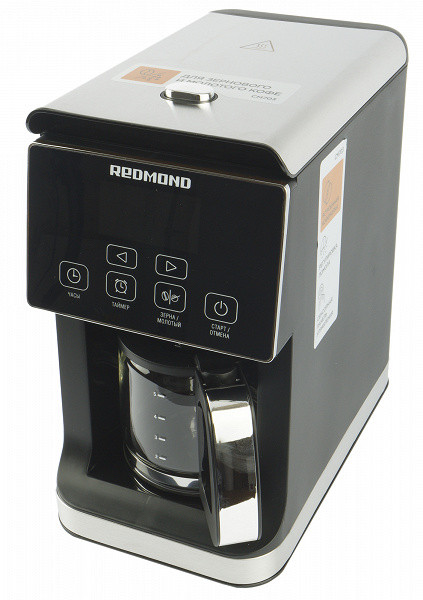
Makita DCM501Z: Battery Powered and Fast Cooking
Introducing an unusual portable coffee maker powered by a battery and designed to make coffee in conditions where there is no electricity, for example, at construction sites or on hikes. This device will be a useful assistant during repair work. The battery is not included in the kit, since it is assumed that the user already has compatible Makita equipment with a removable battery. However, the battery can be purchased separately: the BL series models with a voltage of 10.8 or 18 volts are suitable, including BL10XX, BL14XX and BL18XX. During testing, we used ground coffee, although the instructions recommend using round drip bags with coffee, which, unfortunately, could not be found on sale. The body of the coffee maker is designed to prevent dirt and splashes, which is especially important when using outdoors.

The coffee maker is controlled by one button, without unnecessary functions. Making coffee takes from 5 to 7 minutes depending on the volume of water (maximum 640 ml). Instead of a standard jug, you can use a cup or mug up to 9 cm high. It is important to note that if the water in the tank runs out or the battery overheats, the device will automatically turn off. The coffee maker does not require special maintenance: just rinse the filter under water and periodically clean it with citric acid.
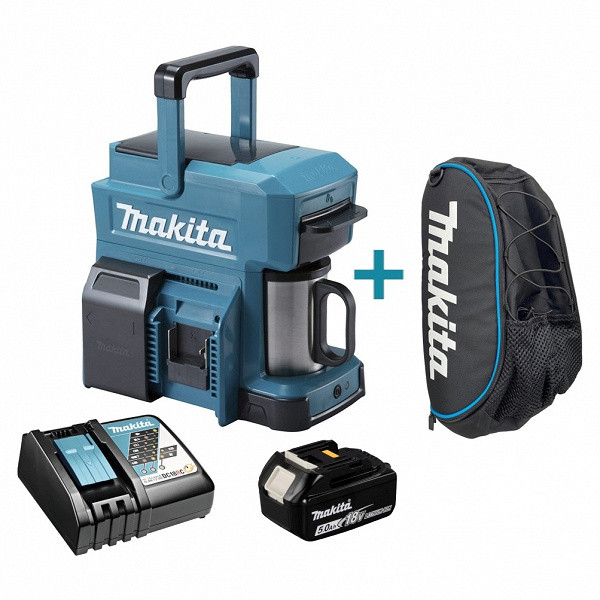
***
A drip coffee maker may seem like a simple device with a well-known operating principle, from which no innovations are expected. However, some of the models we tested were able to surprise us, and it is unlikely that they can be called standard.

